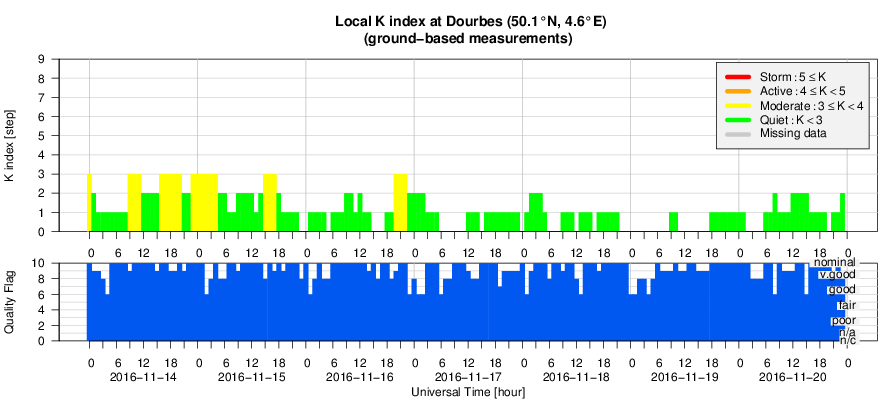- Table of Content
- 1.ESWW13 highlig...
- 2.PROBA2 Observa...
- 3.Review of sola...
- 4.The Internatio...
- 5.Review of geom...
- 6.Geomagnetic Ob...
- 7.Review of iono...
- 8.Future Events
2. PROBA2 Observations (14 Nov 2016 - 20 Nov 2016)
3. Review of solar activity
4. The International Sunspot Number
5. Review of geomagnetic activity
6. Geomagnetic Observations at Dourbes (14 Nov 2016 - 20 Nov 2016)
7. Review of ionospheric activity (14 Nov 2016 - 20 Nov 2016)
8. Future Events
ESWW13 highlights
The 13th European Space Weather Week (ESWW13; http://www.stce.be/esww13/ ) took place in the Casino Kursaal of Oostende from 14 till 18 November. This international space weather conference was organized already for the 11th time by the Solar-Terrestrial Centre of Excellence (STCE). Participants were not confined to Europe, but really came from all sides of the world, representing countries such as Australia, New Zealand, South-Africa, Brazil, Japan, China and South-Korea. The nearly 400 scientists, engineers, satellite operators, power grid technicians, communication specialists,... gathered to discuss the latest on solar activity and how it influences the earth environment and our technologies.
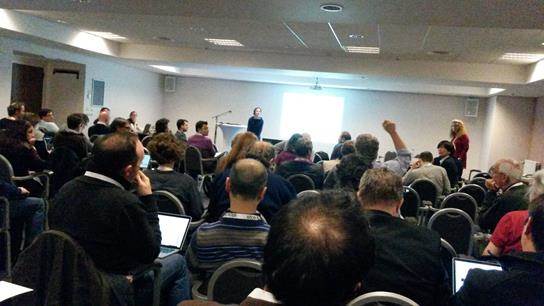
No less than 15 topics were programmed in daily series of 3 parallel sessions. They covered a wide variety of space weather aspects, such as solar energetic particle events, space climate, space weather tools and modelling. Daily keynote lectures introduced the attendees to each series of sessions. Quite some participants had to make tough choices which sessions and presentations they wanted to attend! The related poster sessions included also electronic posters ("e-posters"). The afternoon was reserved for the working meetings (20!), providing the participants the opportunity to discuss in-depth key issues in an interactive style, thus complementing the sessions.
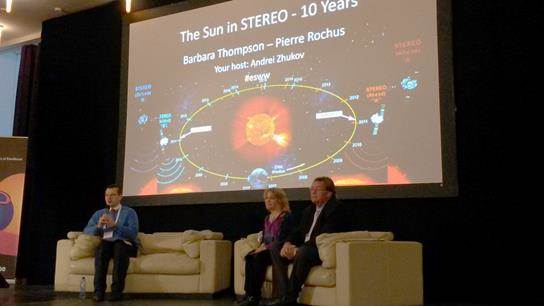

There were also more relaxing activities such as the Tutorial on Monday, which focused, not surprisingly, on space weather forecasting. It started with a sofa session on 10 years STEREO. It was followed by 4 hands-on activities, where you could draw sunspots, build/recognize spacecraft, make your own space weather predictions, or visit the B.USOC (http://www.busoc.be/ ). A panel discussion on the socio-economic impacts of space weather concluded this fun activity. The dedicated space weather Fair on Wednesday afternoon had 21 stand holders! In the spacious "Hall of Honour", visitors could walk from stands on ESA Expert Service Centers, flare forecasting, or radiation doses, to more interactive stands where you could ring the sunspots, make your own CME, or create a solar movie with JHelioviewer. Throughout the week, ESWW participants could also play the online space weather quiz (with certificates for outstanding performances!), and daily space weather forecasts were presented by 5 forecast centres (Spain, USA, UK (2) and Belgium).

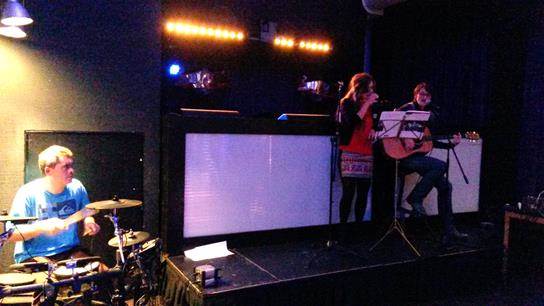
Finally, the attendees could really socialize during the after-hours activities. On Monday, the welcome reception was preceded by an impressive medal award ceremony. On Tuesday, there was a wonderful music evening in the Casino Lounge, where some participants surprised the audience with their remarkable musical and vocal skills. On Wednesday, the Fair was followed by the traditional beer-tasting, where most participants tasted more beers than there were sunspot groups present on the solar disk. That was not so difficult, with a nearly spotless Sun! On Thursday, the conference dinner took place in the Hippodrome (buildings of the Wellington Racetrack). Most guests arrived with soaking wet clothes (courtesy of a good Belgian shower), but were able to warm themselves with good food and drawing some nice cartoons. Also, the 6 winners of last year's bet on the number of X-class flares got a sweet award.
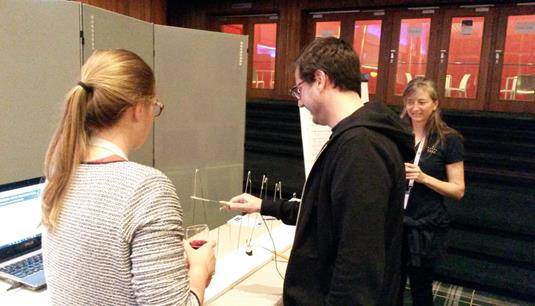
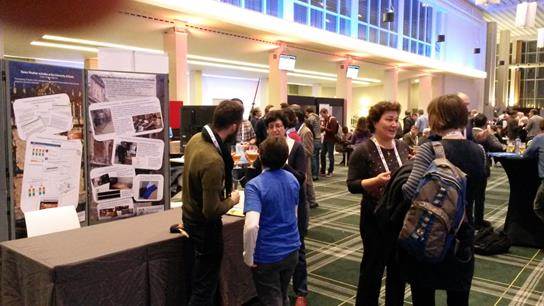
Once again, the enthusiasm and drive of the participants and organizers assured another successful edition of the ESWW. Thank you all, and see you next year!
PROBA2 Observations (14 Nov 2016 - 20 Nov 2016)
Solar Activity
Solar flare activity remained very low during the week.
In order to view the activity of this week in more detail, we suggest to go to the following website from which all the daily (normal and difference) movies can be accessed: http://proba2.oma.be/ssa
This page also lists the recorded flaring events.
A weekly overview movie can be found here (SWAP week 347).
http://proba2.oma.be/swap/data/mpg/movies/weekly_movies/weekly_movie_2016_11_14.mp4
Details about some of this week's events, can be found further below.
If any of the linked movies are unavailable they can be found in the P2SC movie repository here
http://proba2.oma.be/swap/data/mpg/movies/
Wednesday Nov 16
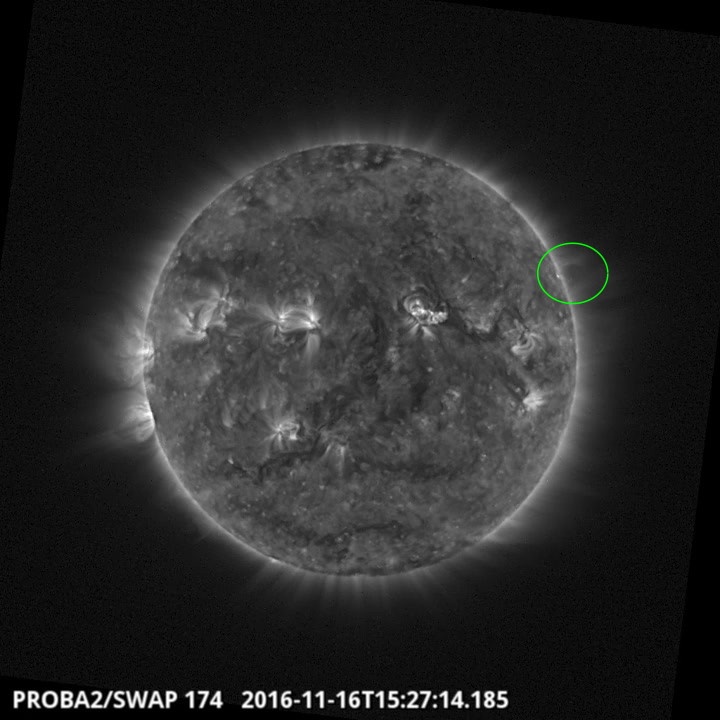
An eruption was observed by SWAP on the west limb of the Sun on 2016-Nov-16 at 15:27 UT
Find a movie of the event here (SWAP movie)
http://proba2.oma.be/swap/data/mpg/movies/20161116_swap_movie.mp4
Thursday Nov 17
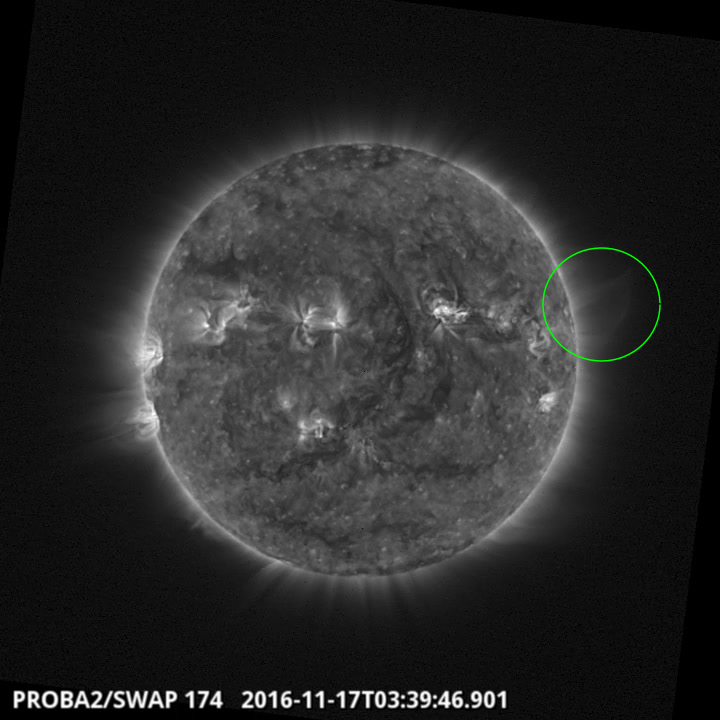
An eruption was observed by SWAP on the west limb of the Sun on 2016-Nov-17 at 03:39 UT
Find a movie of the event here (SWAP movie)
http://proba2.oma.be/swap/data/mpg/movies/20161117_swap_movie.mp4
Thursday Nov 19

An eruption was observed by SWAP on the east limb of the Sun on 2016-Nov-19 at 09:33 UT
Find a movie of the event here (SWAP movie)
proba2.oma.be/swap/data/mpg/movies/20161119_swap_movie.mp4
Review of solar activity
Three low complexity active regions were visible on the solar disk over the week. NOAA region 2609 in the South decayed as it approached the West limb. 2610 saw a period of growth when a new sunspot group emerged to the North-East of the original group, but it eventually was in decay before approaching the West limb. 2611 rotated on disk later in the week but it too later started to decay.
It resulted in no C-flares, only a few B-flares as seen in the GOES graph below.
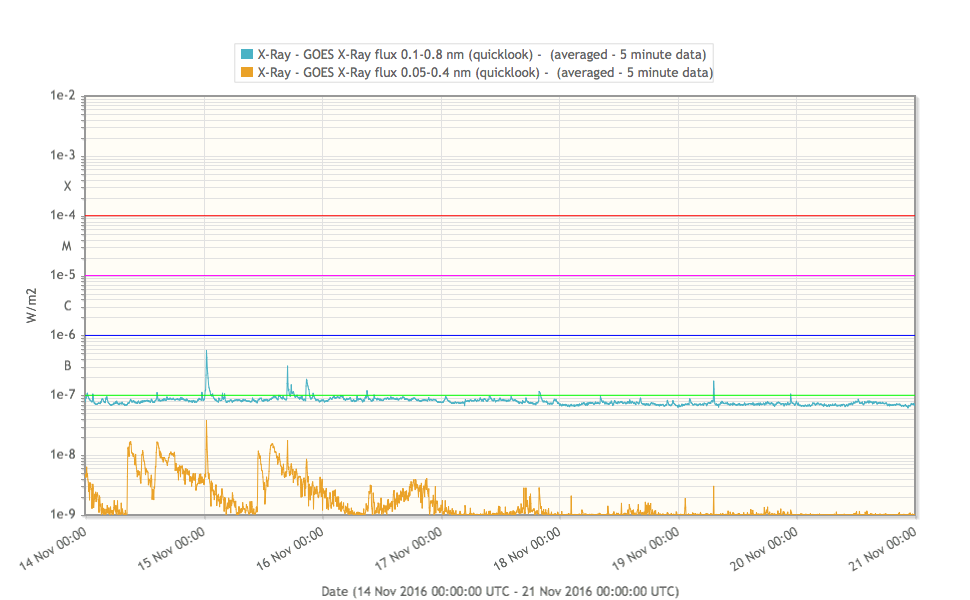
Two filament eruptions were observed from near the centre of the disk on 2016-11-14 and 2016-11-15, but neither of them had any appreciable CME signature in coronagraph data. The two filaments are indicated with white arrows in the SDO/AIA 304 images below.
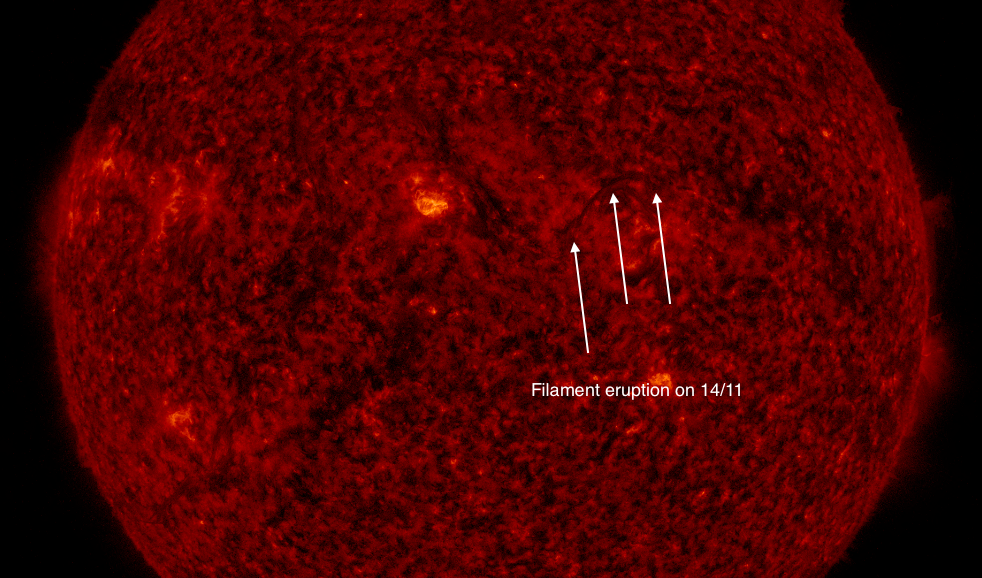
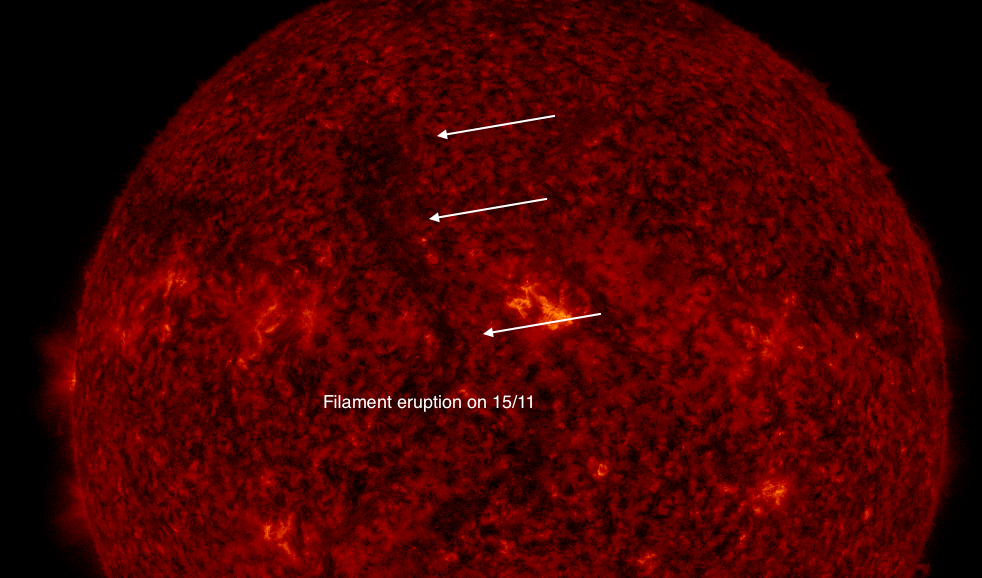
Solar proton flux values were near background levels throughout the week.
The International Sunspot Number
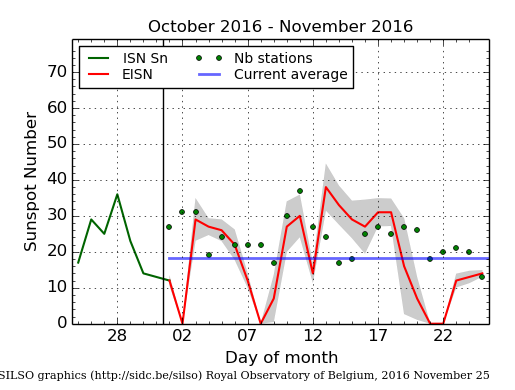
The daily Estimated International Sunspot Number (EISN, red curve with shaded error) derived by a simplified method from real-time data from the worldwide SILSO network. It extends the official Sunspot Number from the full processing of the preceding month (green line). The plot shows the last 30 days (about one solar rotation). The horizontal blue line shows the current monthly average, while the green dots give the number of stations included in the calculation of the EISN for each day.
Review of geomagnetic activity

Solar wind was determined by a return to nominal conditions after the high speed stream conditions from a negative polarity coronal hole. The SDO/AIA 193 image below shows the hole in its full glory.
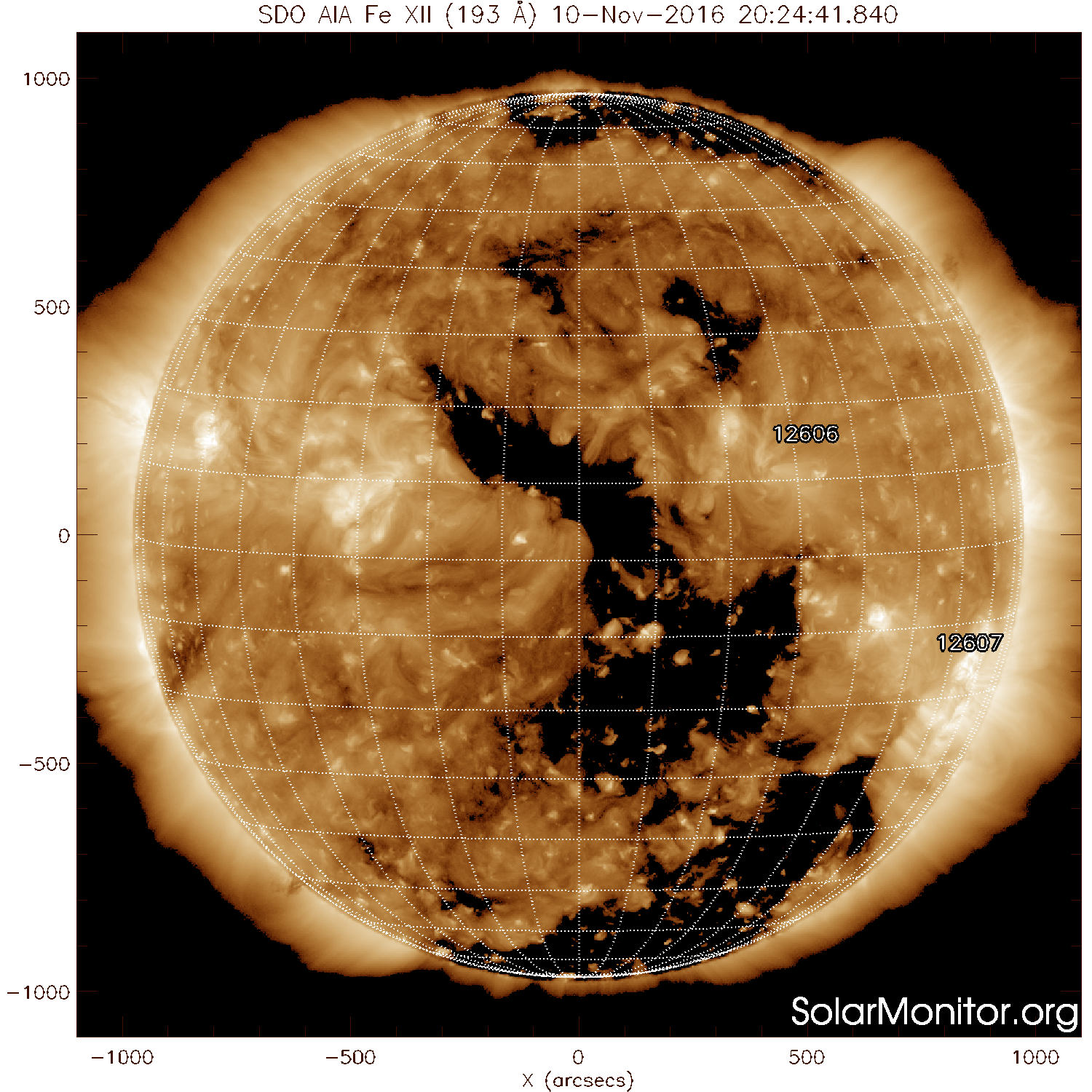
Solar wind speed saw a steady and continuous decline from speeds near 650 km/s towards 300 km/s before the end of the week, after which it settled to values around 350 km/s. Total magnetic field was in the 3-7nT range throughout the week.
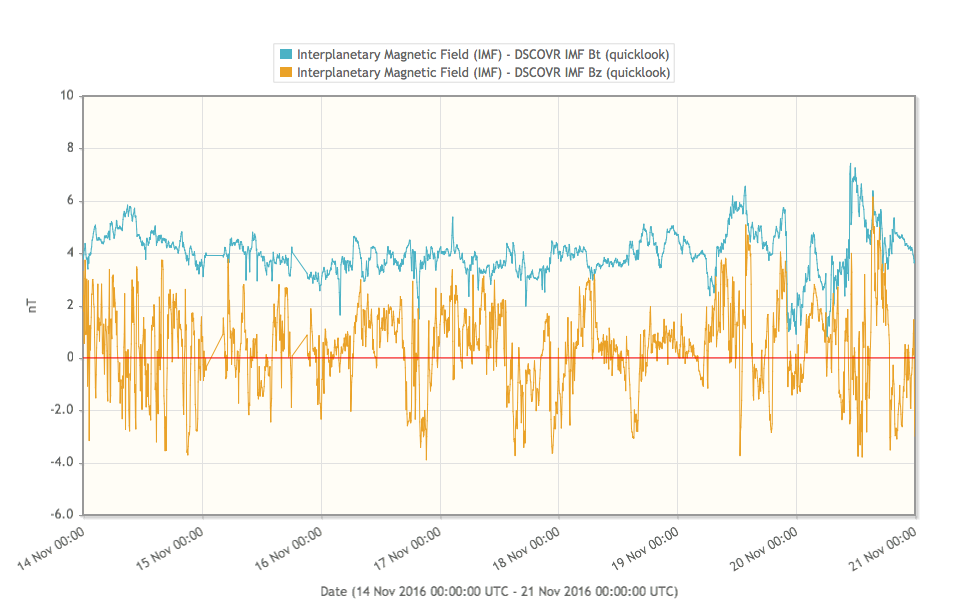
Geomagnetic conditions were first quiet to unsettled and became quiet as solar wind decreased.
Review of ionospheric activity (14 Nov 2016 - 20 Nov 2016)
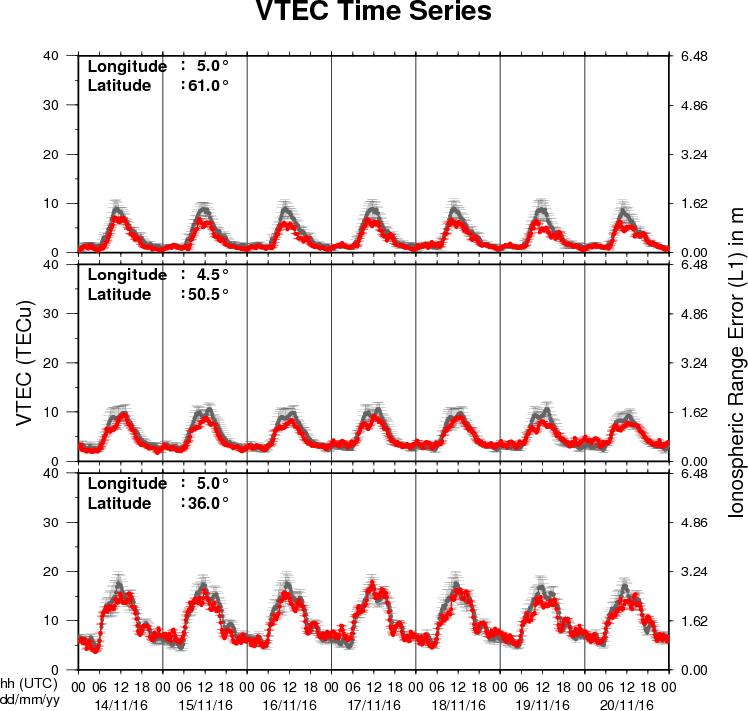
The figure shows the time evolution of the Vertical Total Electron Content (VTEC) (in red) during the last week at three locations:
a) in the northern part of Europe(N61°, 5°E)
b) above Brussels(N50.5°, 4.5°E)
c) in the southern part of Europe(N36°, 5°E)
This figure also shows (in grey) the normal ionospheric behaviour expected based on the median VTEC from the 15 previous days.
The VTEC is expressed in TECu (with TECu=10^16 electrons per square meter) and is directly related to the signal propagation delay due to the ionosphere (in figure: delay on GPS L1 frequency).
The Sun's radiation ionizes the Earth's upper atmosphere, the ionosphere, located from about 60km to 1000km above the Earth's surface.The ionization process in the ionosphere produces ions and free electrons. These electrons perturb the propagation of the GNSS (Global Navigation Satellite System) signals by inducing a so-called ionospheric delay.
See http://stce.be/newsletter/GNSS_final.pdf for some more explanations ; for detailed information, see http://gnss.be/ionosphere_tutorial.php
Future Events
For more details, see http://www.spaceweather.eu/en/event/future
4th SOLARNET Meeting: The Physics of the Sun from the Interior to the Outer Atmosphere, in Lanzarote (Spain)
Start : 2017-01-16 - End : 2017-01-20
The IV SOLARNET MEETING 'The physics of the Sun from the
interior to the outer atmosphere' will take place in Lanzarote
(Spain) from 16th to 20th of January 2017, organized by the
Instituto de AstrofÃsica de Canarias (IAC).
SOLARNET (High-resolution Solar Physics Network) is an EU-FP7
project coordinated by IAC with the aim of bringing together and
integrating the major European research infrastructures in the
field of high-resolution solar physics. SOLARNET involves all
pertinent European research institutions, infrastructures, and data
repositories. Networking activities, access to first-class
infrastructures and joint research and development activities are
being covered under SOLARNET to improve, in quantity and quality,
the service provided by this European community.
The purpose of this conference is to provide a coherent picture
of the Sun as a single physical system playing all the underlying
physical processes measured and observed in the solar atmosphere to
date.
Website:
http://www.iac.es/congreso/solarnet-4meeting/
Solar Orbiter Workshop 7: Exploring the solar environs in Granada, Spain
Start : 2017-04-03 - End : 2017-04-06
This event will be hosted by the Instituto de Astrofisica de
Andalucia - CSIC. Please mind that on April 7th the 20th SWT
meeting will take place at the same venue.
Website: Unkown
